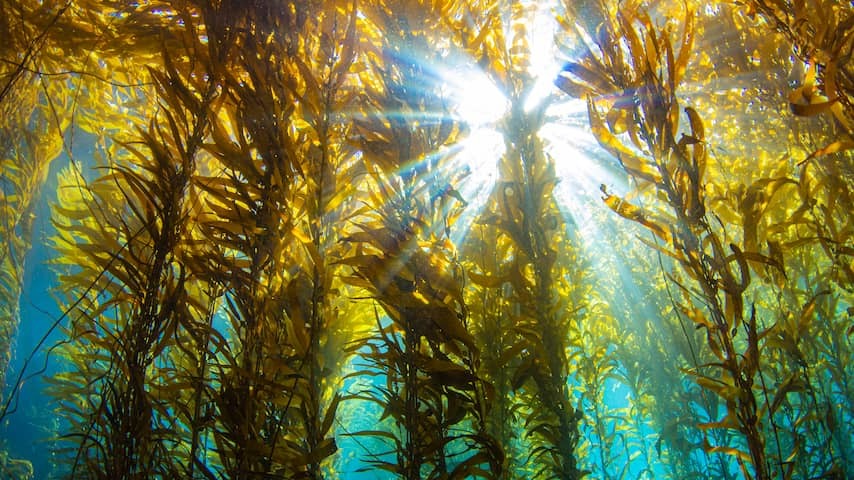
Do we see seaweed not only appearing on our plates in the near future, but also in, among other things, the cultivation of vegetables, fruits, and grains? So-called seaweed fertilizer is a new way to make the agricultural sector more sustainable. Several companies see opportunities.
The first thing people think of when they hear the word seaweed is often either something on the seabed or something on their plate in the form of sushi. In recent years, the popularity of the algae species has increased in several areas. Nikki Spil, co-founder of seaweed refinery Holdfast and Stipe, also noticed this some time ago.
In 2017, Spil started thinking about how we can best use the important substances that seaweed contains. The algae are full of minerals, fibers, and vitamins. In addition, it contains a number of elements that promote the health and growth of crops.
But then there has to be a market waiting for it. According to her, there is, Spil tells NU.nl. “When the new agricultural and climate regulations came up and the farmers came under pressure, we saw an opportunity to push through our ideas to support them.”
The “unique substances” are extracted from the seaweed and then put into fertilizer. This is also called extraction. Spil compares this process to making tea: you separate the substances you need (the tea flavor) from everything you don’t need (the herbs you don’t want to drink).
According to Spil, the start-up already has some paying customers. However, production is not yet running at full capacity. “Next year around this time, we expect to be fully up and running,” says Spil. Earlier this year, the company received a subsidy from the Just Transition Fund, which contributes to a climate-neutral Europe, so that it can further scale up its production.
Sustainable process, but more evidence is needed
Spil is certainly not the first to work with seaweed fertilizers. In fact, the principle is centuries old. “In Europe, seaweed was previously picked and processed on farmland,” says Spil. People already saw that seaweed gives plants a vitamin boost, which makes them better protected against drought or frost.
Seaweed researcher Sander van den Burg of Wageningen University & Research (WUR) sees that more companies in Europe are involved in so-called seaweed stimulants. “In other countries, they are already a bit further ahead with these techniques than here in the Netherlands,” says Van den Burg, who is not involved in the start-up.
According to its own statement, Holdfast and Stipe distinguishes itself by its sustainable production process. According to Spil, this is done by so-called mechanical extraction, in which substances are separated in a physical way and no chemical substances are used. Also, no heat needs to be used and this process ensures that the fertilizer retains more important substances from the seaweed.
At least, that is what is promised. “Quite a few studies show that it works, but there are also some caveats,” says Van den Burg. According to the researcher, little is yet known about why mechanical processing has an extra effect. There are also studies that show that it doesn’t work at all. “So we need more clarity.”
According to Spil, it took a long time before she had the necessary permits to expand the start-up. Van den Burg recognizes this problem within the fertilizer sector. “It is difficult to assess whether something deserves a permit if you don’t understand exactly what is being assessed,” says the WUR researcher.
Seaweed has potential
Another advantage of growing seaweed is that it does not need soil to be grown on. Spil works with other partners in Europe to grow seaweed sustainably on the ocean floor. That doesn’t mean that huge seaweed fields can simply be laid out on the seabed. “It is practically impossible and you also don’t want to disturb marine life,” says Spil.
Doesn’t that make growing and refining seaweed expensive? “If you look at the entire run-up of the company with research included, then yes,” Spil admits. “But the more we produce, the less it will ultimately cost.”
The intention is that the seaweed fertilizer will not only find its way to farmers who grow crops. “Tulip farmers, people who take care of green roofs and greenhouse plants can also benefit from it,” says Spil. That doesn’t make it a one-stop shop. Spil emphasizes that this seaweed product will not solve everyone’s problems.
According to researcher Van den Burg, the seaweed sector has one major advantage: “Governments are very enthusiastic about this type of initiative,” he says. Although more research needs to be done into (the processing of) seaweed, Van den Burg is positive. “Seaweed as fertilizer certainly has potential.”